Cut Packaging Costs by 10–12% in 2025-Without Cutting Corners
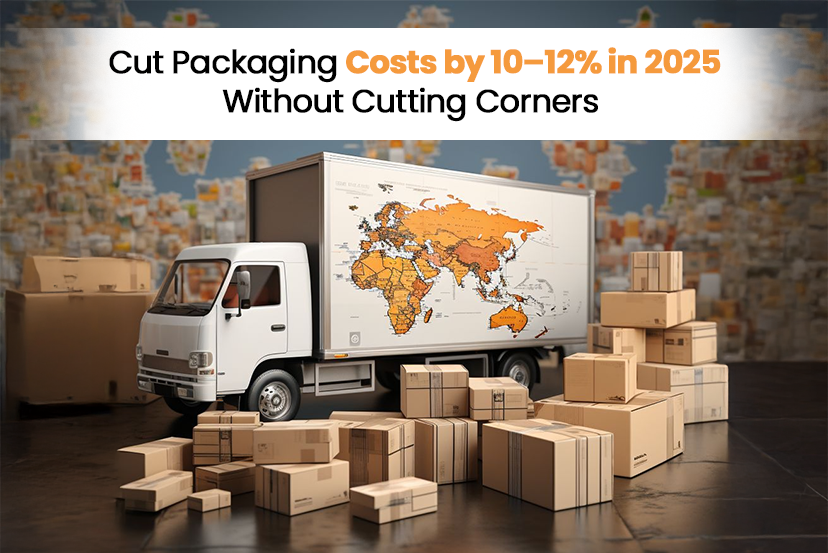
Cut Packaging Costs by 10–12% in 2025-Without Cutting Corners
Let’s be honest-packaging used to be an afterthought. Box it, tape it, ship it, move on. But that mindset? Pretty much extinct now.
These days, packaging is front and center when it comes to smart business strategy. And here’s the kicker: companies across industries are quietly shaving 10-12% off their packaging costs, and their customers can’t even tell the difference. No downgrade in quality. No flimsy boxes. Just smarter choices.
So, what’s the secret? It’s not about doing less. It’s about doing it better-rethinking your materials, streamlining your designs, and getting real with your suppliers.
Let’s dig into what’s actually working right now.
The Packaging Landscape Is Changing-Fast
Green Is the New Cheap
Surprise: going sustainable doesn’t cost more anymore. In fact, in places like Europe, recycled paperboard is now 15-18% cheaper than the virgin stuff.
Production of recycled materials has seriously leveled up-more supply chain, better tech, tighter regulations. And with more demand, the economies of scale have finally kicked in.
Bonus: Sustainable materials are often lighter. And lighter means cheaper to ship. One consumer goods brand cut freight costs by 8% across the board just by switching to lighter recycled materials.
That’s a win-win.
Design Tools That Actually Do Something
Modern packaging software isn’t just for engineers or designers anymore. These tools can flag where you’re wasting material, using the wrong size boxes, or adding unnecessary protection.
One electronics company put its entire product line through a design audit and found they could shrink packaging by a third without affecting protection. That meant less material and lower shipping costs. All from tweaking a few designs.
The truth?
Most packaging hasn’t been updated in years. Products change. Shipping methods change. Packaging… usually doesn’t. Running a design check today can uncover real, fast savings.
Automation That Pays for Itself
Packaging automation used to be a “big company” move. Now? Not so much.
Today’s systems are more about precision than speed-using just the right amount of tape, cutting materials properly, and placing labels where they belong. Sounds small, but when you’re moving thousands of units? That adds up.
Most companies see a 20-25% boost in efficiency, with full ROI in about 12-18 months. And here’s the kicker: fewer mistakes, fewer returns, less waste.
Stop Guessing-Start Using Data
For years, packaging decisions were based on gut instinct and experience. But now, there’s better data-and it’s changing the game.
New tools track everything: not just material prices, but storage costs, handling, shipping, and even disposal. Companies that dig into this data often find their “cheapest” packaging option is actually 15-20% more expensive when you zoom out.
Even smarter? Some platforms help you predict when material prices are likely to rise or fall, so you can plan your buying instead of reacting to them. That alone can save you 5-8% annually.
Real Strategies That Actually Work
1. Make Design Reviews Routine
Most businesses design packaging once and then never touch it again. That’s where money leaks out.
Quarterly reviews using modern design tools can lead to savings of 8-15% per product category. It doesn’t have to be a big lift-just check whether your packaging still makes sense based on current shipping needs, product dimensions, and material costs.
Want to stay sharp? Track a few key metrics like:
- Cost per unit shipped
- Material usage
- Damage rates
That’ll tell you fast whether your packaging is working or just… old.
2. Try New Materials (On Purpose)
Packaging materials are evolving fast. But most teams don’t test anything new unless a supplier comes knocking.
Companies that get ahead of the curve make it a habit to test 3-4 new materials a year. Not just for price, but for handling, durability, storage, and shipping. Sometimes a material that looks more expensive ends up being cheaper once you factor in freight savings or fewer returns.
The key: build a system for testing, not just one-off experiments.
3. Don’t Get Too Cozy with One Supplier
Sticking with one packaging supplier might feel easy, but it’s rarely the cheapest route.
Companies with 2-3 solid options per packaging category tend to see better pricing-often 10-15% than those relying on just one vendor.
It’s not about playing hardball. Just having options keeps everyone honest. Even if you don’t switch, the simple act of reviewing contracts and talking to the market often leads to better terms.
4. Automate Where It Makes Sense
You don’t need to go full-robot overnight. The smart play is to start with one high-volume packaging line, see what works, then build from there.
Target spots where you’re seeing the most waste or the highest labor costs. Even modest automation-like machines that apply consistent tape or cut with precision can lead to big material savings and better consistency.
5. Use Tech That Helps You Make Better Calls
Analytics platforms that connect your design, sourcing, and shipping data help you make smarter trade-offs. Maybe you spend a bit more on materials, but cut freight costs by 20%. These tools help you see that.
Implementation usually takes a few months, but the payoff is solid. Scenario planning-where you model different packaging setups and see the total cost impact-can turn procurement into a strategic win instead of a cost center.
What Kinds of Results Are We Talking About?
Here’s a rough guide based on what we’re seeing across the board:
| Strategy | Time to See Results | Typical Savings |
| Design Review | 2–3 months | 8–15% |
| Add/Review Suppliers | 6–9 months | 10–15% |
| Switch to Sustainable Materials | 4–12 months | 5–12% |
| Targeted Automation | 3–6 months | Up to 25% |
| Use Analytics Platforms | 4–8 months | 5–8% |
A Few Real-World Hurdles (And How to Tackle Them)
Of course, none of this is magic. Switching materials might mean retraining staff. New suppliers need onboarding. Automation systems need regular maintenance.
And yeah-material prices can still swing wildly due to market forces. That’s why flexible supplier relationships and smarter buying strategies are so key.
But the landscape is changing in your favor. Moglix’s business offers Sustainability incentives, better material science, and smarter software tools are making packaging optimization easier and more impactful than ever.
Final Thoughts: It’s All Connected
If you want to really move the needle, don’t treat packaging decisions like a series of isolated choices. Design, materials, suppliers, automation-it all works better when it works together.
The companies that win at this don’t treat cost savings like a one-time project. They build it into how they operate-ongoing reviews, continuous testing, smarter sourcing.
Treat your packaging the way you treat your product: as something worth optimizing, improving, and investing in. Because at the end of the day, smart packaging isn’t just about cutting costs-it’s about increasing margins without cutting quality.
Color Psychology in Packaging: How CPOs Can Leverage Design to Influence Buying Behavior
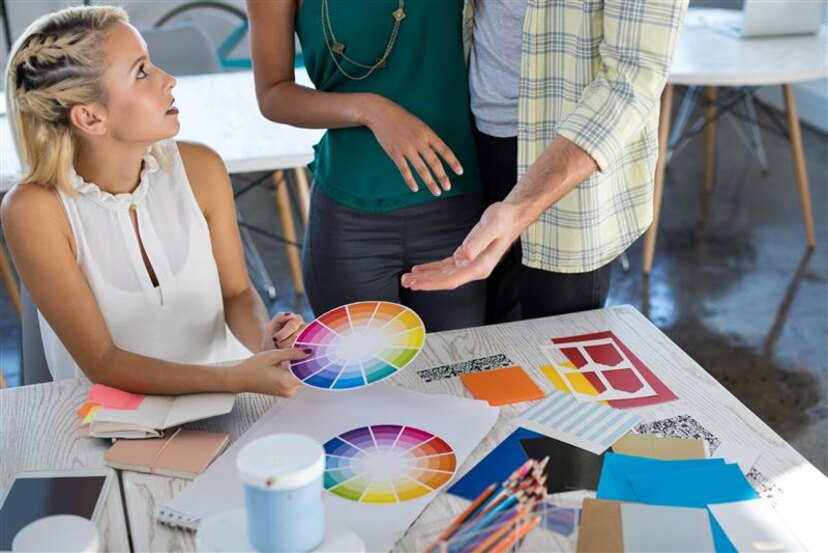
Color Psychology in Packaging: How CPOs Can Leverage Design to Influence Buying Behavior
In today’s fiercely competitive marketplace, product packaging has transcended its traditional role as a mere protective shell.
It has evolved into a dynamic and silent communicator, instantly conveying brand identity, values, and even the very essence of the product within.
Among the myriad elements that contribute to compelling packaging design, color stands out as a pivotal and profoundly influential factor, capable of shaping consumer perceptions and ultimately, driving purchasing decisions.
For Chief Procurement Officers (CPOs), the strategic understanding and masterful harnessing of color psychology in packaging are no longer just aesthetic considerations; they are essential levers for driving consumer engagement, optimizing market appeal, and ultimately boosting sales and market share.
Understanding the Profound Impact of Color Psychology in Packaging
Color psychology is the intricate study of how various hues affect human behavior, emotions, and decision-making processes.
When applied to the tangible realm of packaging, colors become powerful emotional triggers.
They can evoke specific sentiments, transmit subliminal brand messages, and profoundly influence a consumer’s choice at the point of sale.
For instance, the fiery intensity of red often signifies excitement, urgency, or even appetite, making it a common choice for impulse buys or food products.
Conversely, the calming and stable essence of blue frequently conveys trust, reliability, and professionalism, often found in products related to finance, technology, or cleaning.
These ingrained associations profoundly impact how consumers subconsciously perceive a product’s quality, inherent value, and intended purpose even before they consciously process the product’s features.
Extensive market research and psychological studies have consistently demonstrated that color exerts a significant influence on buying decisions.
It shapes how consumers perceive a product’s quality, perceived taste (for food and beverage), freshness, and even its efficacy.
Therefore, the judicious and effective use of color in packaging is not merely about attracting initial attention; it’s about establishing an immediate, non-verbal dialogue with the consumer, communicating crucial product attributes and deeply held brand values within a fleeting glance.
The Strategic Role of CPOs in Leveraging Color Psychology
While packaging design has historically resided within the creative realms of marketing and design teams, the modern CPO plays an increasingly crucial and strategic role. CPOs are uniquely positioned to bridge the conceptual gap between innovative design concepts and their practical, cost-effective implementation.
By intelligently integrating the principles of color psychology into their overarching procurement strategies, CPOs can unlock several significant advantages:
- Enhance Brand Consistency and Recognition: A CPO ensures that packaging colors are meticulously aligned with the established brand identity.
This consistency is paramount for instant brand recognition on a crowded shelf and for fostering a cohesive brand narrative that resonates deeply with target audiences across all product lines and markets.
- Optimize Consumer Appeal and Engagement: Through informed color selection, CPOs can steer packaging schemes towards those that inherently attract and retain consumer attention, directly influencing purchasing behavior and fostering a stronger emotional connection with the brand.
- Drive Cost-Effective Solutions without Compromise: This is where the CPO’s expertise truly shines.
By collaborating intimately with designers and suppliers, CPOs can identify and procure materials, inks, and printing techniques that achieve the desired psychological impact of specific colors without inflating production costs.
They can explore innovative material science and printing methods that deliver vibrant and consistent colors efficiently.
- Ensure Regulatory Compliance and Ethical Considerations: Especially in highly regulated industries such as food, pharmaceuticals, and children’s products, certain colors may carry specific implications, restrictions, or even cultural sensitivities.
CPOs are instrumental in navigating these complex regulatory landscapes, ensuring that color usage adheres to all legal requirements and ethical guidelines, thereby mitigating risk.
- Facilitate Sustainable Choices: CPOs can work with suppliers to explore eco-friendly inks and sustainable packaging materials that can still achieve the desired color vibrancy and psychological impact.
This alignment of color psychology with sustainability goals is increasingly important for environmentally conscious consumers.
Practical Steps for CPOs to Implement Color Psychology in Packaging
Integrating color psychology effectively into procurement requires a methodical and collaborative approach:
- Cultivate Cross-Functional Collaboration: The CPO must act as a central nexus, engaging proactively with marketing, design, and product development teams from the project’s inception.
This collaborative synergy ensures a deep understanding of the desired emotional and psychological impact that packaging colors are intended to achieve.
Such early involvement guarantees that procurement decisions are not merely reactive but actively support the overarching brand and marketing strategies.
- Conduct Rigorous Market Research and Cultural Due Diligence: Colors are not universally interpreted.
What symbolizes purity and freshness in one culture (e.g., white in many Western societies) might unfortunately signify mourning or negativity in another.
CPOs must advocate for and analyze comprehensive consumer preferences and cultural associations related to colors within all target markets.
Understanding these subtle yet critical nuances is absolutely vital for global brands aiming for widespread acceptance and resonance.
- Strategically Select Appropriate Color Palettes: Armed with market research insights, CPOs can then guide the selection of color palettes that are in perfect alignment with the product’s core purpose and the brand’s intended message.
For instance, green is intrinsically associated with health, nature, and sustainability, making it an intuitive and effective choice for organic food products or eco-friendly cleaning supplies.
Conversely, black profoundly conveys luxury, sophistication, and exclusivity, making it the ideal choice for premium offerings like high-end electronics, gourmet chocolates, or designer apparel.
- Engage with Knowledgeable and Technologically Advanced Suppliers: The execution of color psychology in packaging is only as good as the supplier’s capability. CPOs must forge partnerships with suppliers who possess profound expertise in color reproduction, color management systems, and innovative printing technologies.
These suppliers should be able to provide accurate color samples and proofs for rigorous evaluation, ensuring that they utilize high-quality, consistent inks and materials to achieve consistent, vibrant, and true-to-brand colors across all packaging formats and production runs.
This also includes exploring suppliers adept at digital printing for greater color flexibility and personalization.
- Implement Robust Testing and Iteration Cycles: Before committing to full-scale production, CPOs should champion and facilitate consumer testing.
This involves presenting various packaging color options to target consumer groups and meticulously gauging their reactions and emotional responses.
Feedback loops derived from these tests are invaluable for refining color choices, ensuring they elicit the precise emotional responses desired and perfectly align with brand objectives and consumer expectations.
This iterative process minimizes costly errors and maximizes market impact.
- Embrace Data Analytics for Color Performance: Post-launch, CPOs can leverage data analytics to track the performance of different color schemes in the market.
Analyzing sales data, A/B test results, and consumer feedback related to packaging color can provide actionable insights for future product launches and packaging redesigns.
This data-driven approach ensures continuous improvement and optimal return on investment.
Take the Next Steps to Reimagine Your Packaging Design
Color psychology is unequivocally a powerful, yet often underestimated, tool in the arsenal of effective packaging design.
Its capacity to influence consumer perceptions, evoke specific emotions, and ultimately drive purchasing decisions is profound.
For Chief Procurement Officers, integrating color psychology into their procurement strategies transcends the realm of mere aesthetics; it represents a strategic imperative.
It’s about meticulously aligning packaging with core brand values, significantly enhancing consumer appeal, optimizing production efficiency, and, in doing so, making a direct and substantial contribution to the organization’s profitability and competitive advantage.
By embracing this nuanced understanding of color, CPOs can truly transform packaging from a functional necessity into a powerful driver of business success.
Ready to transform your packaging strategy with the strategic power of color psychology? Mail your inquiries to info@moglixbusiness.com
5 Packaging Strategies CPOs of D2C Brands Should Adopt in June to Boost Summer Sales
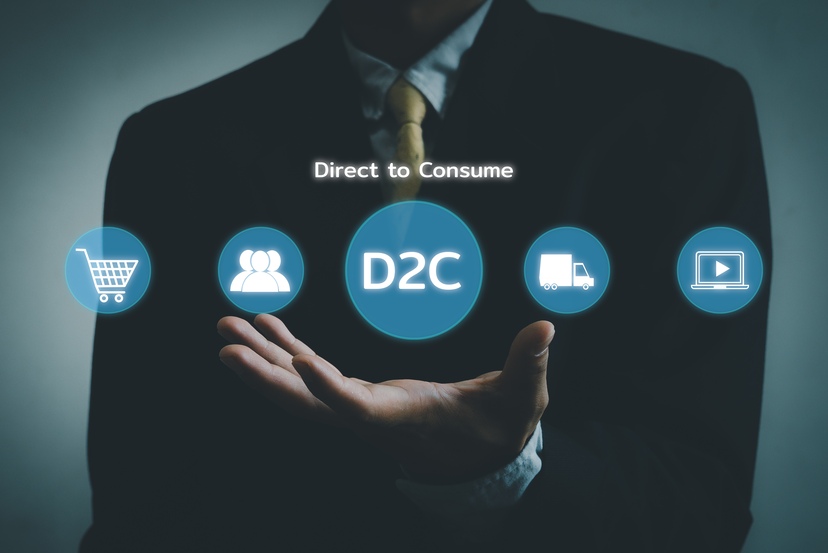
5 Packaging Strategies CPOs of D2C Brands Should Adopt in June to Boost Summer Sales
As the sun shines brighter and temperatures rise, consumer behavior shifts—ushering in a wave of fresh opportunities for D2C brands.
June marks a strategic inflection point for Chief Procurement Officers (CPOs) to fine-tune their D2C packaging strategies in preparation for the bustling June summer sales season.
While product offerings often take center stage, packaging has emerged as a powerful lever for growth—especially in the Direct-to-Consumer landscape.
Smart packaging doesn’t just protect goods; it enhances the unboxing experience, communicates brand values, and improves supply chain efficiency.
‘CPOs who capitalize on this early seasonal window can unlock better margins, customer loyalty, and engagement without overshooting budgets.
Here are five actionable and cost-effective packaging ideas every CPO at a D2C brand should implement this June to drive summer sales and elevate brand experience.
1. Optimize Material Costs Without Sacrificing Quality
Summer is a season of high-volume sales, making it the perfect time to revisit your packaging procurement costs.
Rising logistics prices and material inflation can eat into your margins if left unchecked.
Tip: Switch to seasonal or local suppliers.
By sourcing packaging materials from local or regional vendors during peak months, you not only reduce lead times and transportation costs but also increase responsiveness to last-minute changes in demand.
Seasonal packaging material providers may offer discounts or incentives during summer due to bulk orders.
Packaging optimization in D2C doesn’t mean going cheaper; it means going smarter.
Lightweight but durable materials like corrugated kraft, paper-based void fills, and molded pulp offer the same level of protection while cutting shipping costs.
Bonus: Working with local suppliers may also help meet sustainability goals by reducing carbon emissions from transportation.
2. Refresh Design for Summer Appeal
Consumers love seasonality. Summer brings holidays, travel, and celebrations—making it an ideal time to add flair to your packaging design.
A visually appealing package that aligns with seasonal themes can make your brand feel timely, fresh, and relevant.
Tip: Launch limited-edition summer-themed packaging.
Add tropical colors, beach motifs, sunshine illustrations, or product-specific summer icons to your box or mailer designs.
Even a small update, like a summer edition logo sticker or vibrant colored tape, can boost perceived value and excitement.
Why it works:
- Enhances customer engagement
- Encourages social sharing (free marketing!)
- Reinforces a premium brand feel
Seasonal packaging trends have shown that themed packaging during summer can increase repeat purchases and customer retention rates, particularly for beauty, fashion, wellness, and food brands.
3. Audit the Unboxing Experience
In the world of D2C, the unboxing experience has evolved into a brand ritual.
It’s the moment of truth—where expectation meets reality. While the outer packaging protects, the inner packaging delights.
Tip: Add low-cost “wow” elements like stickers, inserts, or tissue paper.
A simple thank-you card, eco-friendly sticker set, or summer-themed message insert can add personality without adding bulk or expense.
Use this space to remind customers of your brand values, share product care tips, or even drop a discount code.
Packaging optimization for D2C doesn’t always mean dramatic changes. Sometimes, it’s the subtle emotional triggers—surprise, delight, thoughtfulness—that make customers return.
Pro Tip: Use feedback loops. Add a sticky note inviting customers to rate their packaging experience or share an unboxing video online with a custom hashtag.
4. Improve Shipping Efficiency
June is the perfect time to re-evaluate your shipping strategy before the full heat of summer sales sets in.
Bulky or poorly sized packaging not only costs more to ship but can also lead to product damage or excessive waste.
Tip: Resize packaging to cut logistics costs.
Conduct a packaging audit to identify SKUs where boxes or mailers are oversized.
Switch to right-sized packaging using 3D modeling tools or consult your packaging partner for optimization suggestions.
Why it matters:
- Lowers DIM (Dimensional Weight) charges
- Reduces void-fill and internal material usage
- Improves stacking and storage space
Packaging efficiency isn’t just about cost—it’s also about delivering operational excellence across your logistics and fulfillment teams.
Plus, customers will appreciate sustainable reduction in waste.
5. Use Packaging to Reinforce Loyalty
In D2C, where customer acquisition costs are soaring, the real profits come from retention. Packaging can be a quiet but effective loyalty driver when done right.
Tip: Include QR codes for loyalty or referral programs.
Instead of static printed brochures, embed dynamic QR codes inside the package that lead customers to join your rewards program, unlock an exclusive summer deal, or refer a friend.
It’s cost-effective, scalable, and engaging.
Other ideas:
- Direct users to a summer playlist or behind-the-scenes video
- Share user-generated content from the brand’s social handles
- Offer birthday or milestone rewards linked to packaging inserts
Modern CPOs must look at packaging not just as a cost center but as a conversion and loyalty channel that works in harmony with marketing, design, and CX teams.
Now’s the Time for Packaging-Led Growth
June presents a powerful pre-summer window for D2C brands to elevate packaging without overhauling operations.
For CPOs, it’s a golden opportunity to drive growth through smart, seasonal, and strategic packaging changes that impact the bottom line and customer satisfaction.
Whether it’s optimizing costs, redesigning for summer, or turning every package into a mini loyalty campaign, these five packaging tweaks can make a measurable difference.
But timing is everything. The earlier your teams align, the more impact you’ll see during peak sales months.
Encourage a cross-functional review today—bring together marketing, design, logistics, and procurement to ensure your D2C packaging strategies are future-ready.
Want to optimize your D2C packaging this summer?
Mail your inquiries to: info@moglixbusiness.com
Explore our scalable, cost-effective packaging solutions: https://packaging.moglix.com/
How CPOs Can Balance Protection and Presentation in E-commerce Packaging
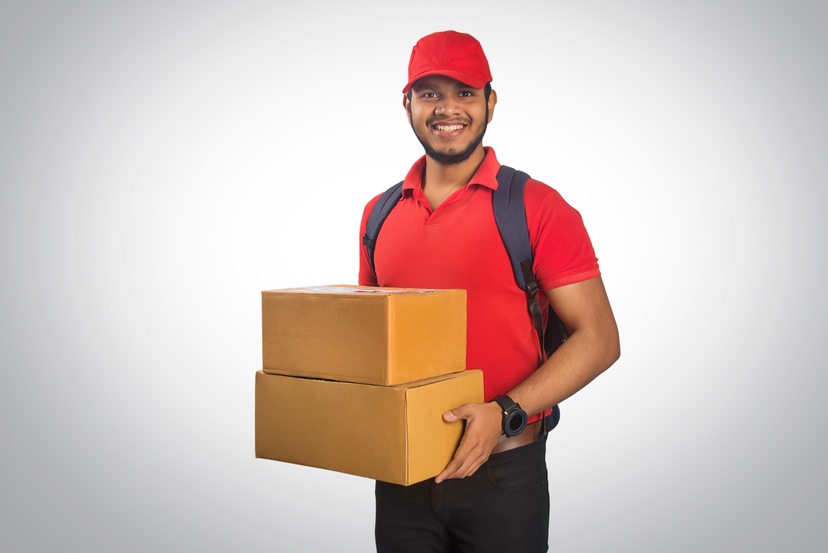
How CPOs Can Balance Protection and Presentation in E-commerce Packaging
In today’s rapidly evolving digital retail landscape, e-commerce packaging has emerged as a critical touchpoint between businesses and consumers.
For Chief Procurement Officers (CPOs), this means packaging is no longer just a logistical requirement—it’s a strategic lever for enhancing brand value, ensuring customer satisfaction, and optimizing costs.
On one hand, the packaging must provide protective packaging solutions to safeguard products from damage during transit. On the other hand, it needs to deliver a polished presentation that contributes to an unforgettable unboxing experience.
Striking the right balance between these two aspects can be challenging but is essential to thrive in a competitive e-commerce environment.
This blog explores the dual importance of protection and presentation in e-commerce packaging and offers practical strategies for CPOs to balance both efficiently.
Whether you’re a growing D2C brand or a large enterprise optimizing packaging efficiency, the insights here can help elevate your procurement approach.
The Importance of Protection in E-commerce Packaging
Protection is the foundational function of any e-commerce packaging.
With products traveling through complex logistics networks moving between warehouses, shipping carriers, and customer doorsteps the risk of damage is significant.
For CPOs, ensuring robust protective packaging solutions is essential to minimize returns, avoid negative reviews, and uphold brand trust.
Here’s why protection matters:
- Reduces damage and returns: Poor packaging leads to breakage or product leaks, contributing to high return rates and revenue losses.
- Enhances customer satisfaction: Consumers expect their orders to arrive in perfect condition. Well-protected packaging fosters reliability.
- Complies with shipping standards: Logistics providers often have packaging compliance guidelines; non-compliance can lead to penalties or shipment delays.
- Supports sustainability goals: High-quality protection reduces waste by preventing the need for product replacements or double shipping.
Common protective solutions include corrugated boxes, air pillows, molded pulp inserts, bubble wraps, and tamper-evident seals.
The key for CPOs is selecting materials that ensure optimal protection without inflating packaging volume or weight, which can drive up shipping costs.
The Importance of Presentation in E-commerce Packaging
While protection ensures the product arrives intact, presentation ensures the experience leaves a lasting impression.
In a crowded digital marketplace, your packaging is a powerful branding tool that can convert one-time buyers into repeat customers.
Here’s how presentation influences e-commerce success:
1. Impacts Brand Image and Perception
Packaging is often the first physical interaction a customer has with an e-commerce brand.
Thoughtful packaging design reflects professionalism, attention to detail, and brand personality.
A drab, generic package can make even a premium product feel underwhelming, while a well-designed box elevates the perceived value.
2. Drives Unboxing Excitement and Word-of-Mouth Marketing
The rise of social media has given birth to the phenomenon of “unboxing.” Customers, especially Gen Z and Millennials, love sharing aesthetically pleasing unboxing experiences on platforms like Instagram, TikTok, and YouTube.
Creative packaging becomes free advertising and boosts organic brand reach.
3. Fosters Customer Loyalty
A personalized note, branded sleeve, or clever design elements can delight customers and make them feel valued. This emotional connection often results in repeat purchases and increased lifetime value.
Elements that contribute to memorable packaging presentation include:
- Custom branding with logos and brand colors
- Sustainable materials that reflect eco-conscious values
- Cohesive design elements that align with marketing campaigns
- User-friendly openings, like tear strips or magnetic closures
- Minimalist inserts, such as thank-you cards or QR codes linking to loyalty programs
Balancing Protection and Presentation: Key Considerations for CPOs
The real challenge for CPOs lies in harmonizing these two goals, keeping the product safe while delivering a premium customer experience without inflating costs or complicating the supply chain.
Key questions CPOs must consider:
- How can we protect the product while minimizing packaging material?
- Can our packaging serve both protective and branding functions?
- Are we using too much filler for protection that negatively impacts the unboxing experience?
- Can we consolidate SKUs to reduce packaging complexity?
Balancing cost and branding in packaging requires cross-functional collaboration between procurement, marketing, logistics, and sustainability teams.
CPOs must evaluate packaging holistically, weighing total cost of ownership, sustainability impact, and customer experience simultaneously.
Strategies for CPOs to Optimize Packaging Balance
Here are several proven strategies CPOs can implement to achieve the perfect blend of protection and presentation:
1. Adopt Modular Packaging Designs
Using a modular system where standardized outer packaging is combined with customizable inserts helps maintain protection while allowing for branding flexibility.
It also simplifies procurement and inventory management.
2. Leverage Data to Guide Packaging Choices
CPOs should analyze return rates, shipping damages, and customer feedback to refine packaging specs.
For instance, frequent damage in specific SKUs may warrant more cushioning or structural changes.
3. Invest in Customizable Eco-Friendly Materials
Sustainable packaging doesn’t mean compromising quality.
Biodegradable air pillows, corrugated mailers, and compostable void fills can deliver protection while aligning with green branding.
4. Collaborate with Packaging Vendors Early
Involving packaging suppliers during product development phases ensures better alignment between design, materials, and cost goals.
It also accelerates time-to-market and innovation in packaging solutions.
5. Conduct Regular Packaging Audits
Routine audits help identify over-packaging, under-protection, or missed branding opportunities. CPOs can then benchmark their packaging performance against industry standards and competitors.
6. Use Technology for Simulation and Prototyping
Packaging simulation tools allow procurement teams to test protective strength, sustainability impact, and aesthetics without physical prototypes. This shortens design cycles and reduces waste.
Take the Next Steps to Reimagine Your E-Commerce Packaging
In the evolving world of digital commerce, e-commerce packaging is no longer just a shipping necessity—it’s a strategic asset.
CPOs who master the art of balancing protection and presentation stand to deliver greater value across the procurement function, from cost savings and operational efficiency to brand enhancement and customer loyalty.
The most effective packaging strategies combine protective packaging solutions with creative branding elements, all while keeping an eye on cost, sustainability, and scalability.
With intelligent planning and the right tools, CPOs can unlock the full potential of packaging as a lever for growth.
Ready to elevate your e-commerce packaging game? Mail your inquiries to info@moglixbusiness.com
How CPOs Can Elevate Summer Product Launches with Standout Packaging for D2C Brands
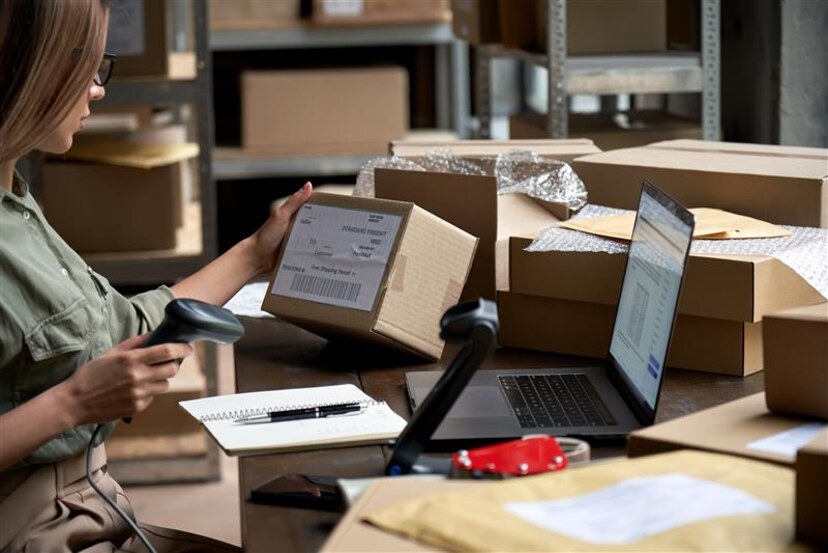
How CPOs Can Elevate Summer Product Launches with Standout Packaging for D2C Brands
Summer is a season bursting with opportunities for D2C brands. As consumers embrace brighter days, vacations, and outdoor activities, they are eager for fresh products that enhance their lifestyle.
This makes summer product launch packaging an essential factor in driving sales and standing out in a crowded marketplace.
For Chief Procurement Officers (CPOs), packaging is no longer just a cost center or logistical necessity; it’s a strategic asset that can elevate the entire brand experience.
By leveraging innovative, customer-centric D2C packaging solutions, CPOs can optimize every touchpoint, from warehouse to doorstep, ensuring that summer launches don’t just meet expectations but create lasting impressions.
In this post, we explore how CPOs can elevate their summer product launches through standout packaging that balances style, function, and efficiency.
1. Focus on Customer-Centric Design
Summer evokes a sense of fun, vibrancy, and adventure emotions that consumers crave in their purchases.
Customer-centric packaging should tap into this seasonal mood, creating an immediate emotional connection.
CPOs can collaborate with design teams to develop packaging that reflects summer energy through vibrant colors, bold graphics, and seasonally relevant themes.
Think tropical prints, beach motifs, sun-soaked palettes, or festival-inspired artwork.
Limited-edition packaging aligned with popular summer events or trends can significantly boost consumer interest.
For example, a skincare brand launching a sun care product could use packaging with bright yellows and blues, featuring sun and wave designs.
This not only makes the product visually appealing but also reinforces the brand’s seasonal relevance.
2. Optimize Packaging for Shipping Efficiency
D2C brands live and breathe efficient fulfillment, especially during the high-demand summer months.
Packaging that is cumbersome or poorly sized can increase shipping costs and risk product damage.
CPOs must ensure packaging optimization for D2C by right-sizing boxes and mailers to minimize dimensional weight charges without compromising product protection.
Lightweight yet durable materials like corrugated cardboard or recyclable molded pulp offer the perfect balance.
One effective strategy is transitioning to flat-pack or collapsible packaging for larger or seasonal products.
This reduces shipping volume when items are in transit, lowering costs and environmental impact.
Efficient packaging ensures fast, reliable delivery — a must-have during peak summer sales when customer expectations for speed and safety are at an all-time high.
3. Create Memorable Unboxing Experiences
The unboxing moment has become a powerful marketing tool for D2C brands.
A thoughtfully designed unboxing experience can turn first-time buyers into loyal customers and inspire social media shares that amplify brand visibility.
CPOs should focus on enhancing unboxing with small, branded touches that surprise and delight.
Adding personalized thank-you notes, summer-themed inserts, or interactive packaging elements can boost customer engagement significantly.
For instance, including a small summer gift like a branded sunscreen sample or a discount coupon inside the package not only enhances perceived value but also increases the chance of repeat purchases.
Unboxing isn’t just about aesthetics — it’s about creating a multisensory journey that builds emotional connections with your brand.
4. Sustainable Packaging Choices
Modern consumers increasingly demand that brands align with their values, and sustainability tops the list.
Sustainable packaging has evolved from a nice-to-have to a competitive differentiator.
CPOs should prioritize eco-friendly materials like recyclable, biodegradable, or compostable packaging options for their summer launches.
This could include recycled paper fillers, biodegradable packing peanuts, or reusable bags.
Highlighting these choices on the product page or within the packaging reinforces transparency and resonates deeply with environmentally conscious buyers.
Sustainability efforts not only improve brand reputation but also often lead to cost savings in materials and waste management.
5. Leverage Seasonal Packaging to Boost Brand Identity
Packaging is a powerful brand ambassador, especially during seasonal campaigns.
Summer is the perfect time for CPOs to align packaging with brand identity, reinforcing core messages, and visual consistency.
Incorporate your brand’s colors, logo, and messaging in ways that echo the energy of the summer launch.
Coordinating with marketing teams ensures that packaging supports ongoing campaigns such as “Summer Essentials” or “Beach Ready.”
For example, a brand that prides itself on wellness and vitality can emphasize this with bright, uplifting packaging and messaging that encourages customers to “Stay refreshed this summer.”
Such alignment ensures your packaging stands out both physically on shelves and digitally on social media feeds.
6. Keep Packaging User-Friendly and Functional
While protection and presentation are critical, functionality must not be overlooked.
Packaging that is easy to open, store, or reuse adds considerable value to the customer experience.
CPOs should prioritize user-friendly packaging solutions such as resealable bags, easy-open tabs, or foldable boxes that can be repurposed for storage or gifting.
For example, designing boxes that customers can later use to organize their homes or keep their favorite products increases perceived utility and fosters positive brand associations.
Practical packaging solutions reduce frustration and create a seamless experience that customers appreciate ultimately supporting repeat business.
Take the Next Steps to Reimagine Your Summer Product Launch Packaging
For D2C brands, summer product launches offer a high-impact moment to connect with customers and boost sales.
CPOs play a pivotal role in this success by aligning packaging strategies with brand values and consumer expectations.
By focusing on customer-centric design, shipping efficiency, memorable unboxing, sustainability, brand alignment, and user functionality, CPOs can transform packaging from a simple container into a powerful brand experience driver.
As summer approaches, now is the time to collaborate cross-functionally working closely with marketing, design, and logistics teams to review, test, and refine your packaging strategies.
This proactive approach will ensure your summer launches stand out not just on the shelf but also in the hearts and minds of your customers.
Bonus Tip: Track key performance metrics during the summer season such as customer feedback, repeat purchase rates, and social media engagement to continuously improve your packaging approach for future launches
Ready to elevate your summer product launch packaging?
Mail your inquiries to:info@moglixbusiness.com
Explore tailored D2C packaging solutions at: https://packaging.moglix.com/
Packaging Procurement for CPOs: Sourcing Self-Adhesive Tape, Shipping Boxes, and Corrugated Packaging Solutions
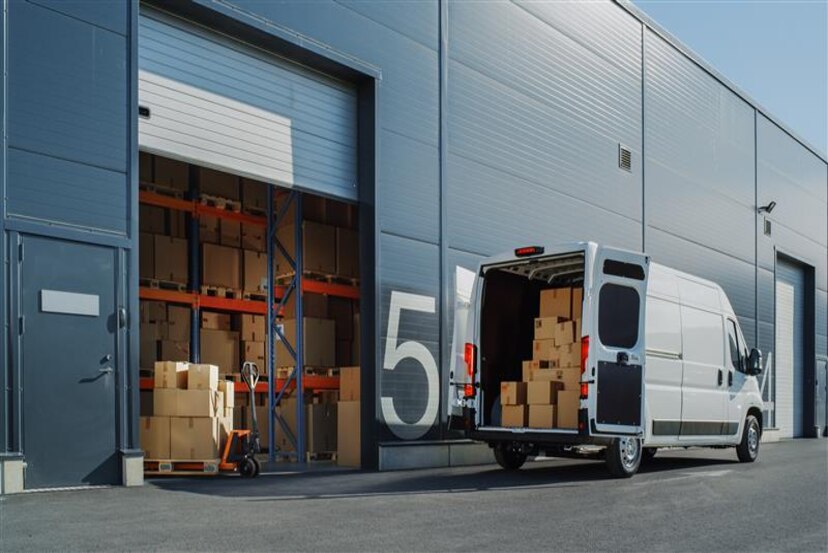
Packaging Procurement for CPOs: Sourcing Self-Adhesive Tape, Shipping Boxes, and Corrugated Packaging Solutions
In today’s competitive supply chain landscape, packaging procurement plays a crucial role in driving operational efficiency and controlling costs.
For Chief Procurement Officers (CPOs), the right approach to sourcing packaging procurement solutions can significantly impact both profitability and customer satisfaction.
From ensuring secure product delivery to minimizing waste and optimizing costs, strategic packaging decisions have never been more important.
This blog explores best practices and sourcing strategies for essential packaging materials such as self-adhesive tape, shipping boxes, and corrugated packaging solutions—core components that support seamless logistics across industries.
Why Smart Packaging Procurement Matters
Effective packaging procurement is more than just buying boxes and tape—it’s about creating a reliable, cost-effective, and scalable packaging system that aligns with your broader business goals.
- Cost Reduction: Choosing the right packaging materials can significantly reduce material, transport, and damage-related expenses.
- Waste Minimization: Sourcing packaging with appropriate size and strength reduces over-packaging and material waste.
- Product Safety: High-quality packaging ensures product integrity during handling and transit, reducing returns.
- Supplier Reliability: Building relationships with reliable vendors strengthens the supply chain and ensures timely deliveries.
Inventory Optimization: Better procurement planning helps streamline inventory storage and reduce overstocking or shortages.
Key Packaging Materials & Sourcing Tips
Self-Adhesive Tape: Essential for Secure Sealing
Self-adhesive tape is a staple in any packaging setup—used for sealing, tamper-proofing, branding, and labeling.
Why It Matters:
- Ensures package integrity during handling and transit.
- Enhances brand visibility through printed or custom-printed tape.
- It helps to prevent tampering and improves customer trust.
Sourcing Tips:
- Purchase in bulk to leverage better pricing and reduce unit costs.
- Select strong adhesion tapes for heavy or high-value shipments.
- Choose eco-friendly options such as paper-based or biodegradable adhesive tapes to align with sustainability goals.
Shipping Boxes: Balancing Durability and Cost
Shipping Boxes are the backbone of packaging logistics.
From single-ply boxes for lightweight shipments to multi-ply for bulkier or fragile items, choosing the right box can reduce both material and transportation costs.
Why It Matters:
- Protects products from damage during shipping.
- Contributes to efficient warehouse storage and stacking.
- Reduces customer dissatisfaction and return costs.
Sourcing Tips:
- Choose custom sizes to avoid empty space, reduce filler use, and minimize volumetric shipping charges.
- For light to moderate-weight goods, single-ply boxes are cost-efficient.
- For heavy-duty or export packaging, multi-ply or reinforced boxes offer better protection.
- Consider working with suppliers who offer recyclable materials to meet environmental standards.
Corrugated Packaging Solutions: Sustainable and Strong
Corrugated Packaging Solutions are preferred for their versatility, strength, and eco-friendly characteristics.
They are widely used across industries, from e-commerce and pharmaceuticals to manufacturing and electronics.
Why It Matters:
- Provide excellent cushioning and shock resistance.
- Are lightweight, reducing overall shipping costs.
- Support circular economy goals through recycling and reuse.
Sourcing Tips:
- Choose suppliers that offer recyclable and biodegradable materials.
- Work with vendors that can customize corrugated solutions to your product size and shipping requirements.
- Evaluate board quality (single-wall, double-wall, triple-wall) based on your product’s fragility.
Best Practices for CPOs in Packaging Procurement
To make the most of your sourcing packaging procurement strategy, CPOs must focus on not just price, but also reliability, quality, and sustainability.
1. Compare Vendors for Better Value
- Use digital platforms to compare supplier rates, delivery timelines, and product specifications.
- Review vendor performance history and service reliability.
2. Negotiate Volume Discounts
- Lock in long-term contracts with suppliers to secure bulk purchasing discounts.
- Work with vendors who provide flexible MOQs (Minimum Order Quantities).
3. Implement Data-Driven Decision Making
- Use analytics and procurement software to monitor consumption, reorder cycles, and vendor performance.
- Leverage dashboards to track packaging spend and evaluate savings opportunities.
4. Prioritize Quality and Compliance
- Ensure packaging meets industry standards for durability and safety.
- Conduct periodic quality audits of incoming packaging supplies.
- Choose suppliers that meet ISO or similar certifications.
5. Integrate Sustainability into Procurement
- Include environmental metrics in your supplier evaluation criteria.
- Opt for eco-conscious materials that support your organization’s ESG goals.
- Promote packaging solutions that reduce carbon footprint during logistics.
Packaging Procurement and Digital Transformation
Modern packaging procurement is increasingly driven by digital transformation.
Platforms like Moglix offer end-to-end visibility into sourcing, tracking, and inventory management of packaging supplies.
Digital procurement tools provide:
- Automated reordering based on usage trends.
- Supplier performance tracking and quality compliance.
- Real-time cost comparisons and price optimization.
- Sustainability scorecards to ensure ESG alignment.
Transform Packaging Procurement with Moglix
Smart packaging procurement is a powerful lever for cost savings, operational efficiency, and sustainability.
By focusing on quality self-adhesive tape, purpose-fit shipping boxes, and durable corrugated packaging solutions, CPOs can streamline packaging operations while meeting both performance and regulatory demands.
To truly optimize packaging procurement, companies must embrace digital platforms, build strong supplier relationships, and prioritize eco-friendly solutions.
Ready to enhance your packaging procurement?
Explore Moglix’s wide range of cost-effective, high-quality packaging solutions—from adhesive tapes to corrugated boxes, all in one place. Start sourcing smarter and drive value across your supply chain today.
Visit our packaging solutions portal or mail your inquiries to info@moglixbusiness.com.
E-commerce Packaging Strategies for CPOs: Cost-Effective Solutions with Cello Tape, Packaging Materials, and Pricing Insights
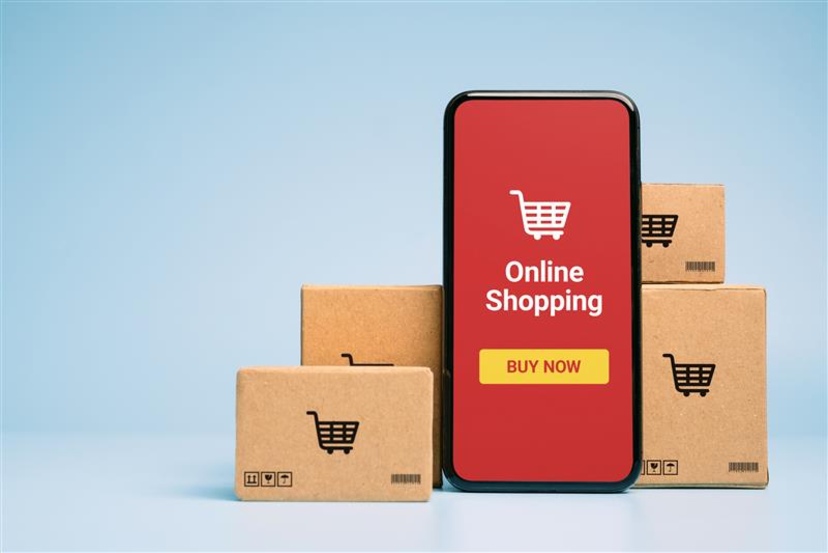
E-commerce Packaging Strategies for CPOs: Cost-Effective Solutions with Cello Tape, Packaging Materials, and Pricing Insights
In today’s digital economy, e-commerce has become the backbone of modern retail.
As online sales surge, companies face increasing pressure to deliver orders swiftly, securely, and sustainably.
At the heart of this challenge lies one crucial component: e-commerce packaging strategies.
For Chief Procurement Officers (CPOs), finding cost-effective packaging solutions can significantly impact margins and customer satisfaction.
In this blog we will explore the smart ways to optimize packaging using everyday materials like cello tape, corrugated board, angle boards, and label paper.
While uncovering key pricing insights that can help reduce operational costs without compromising quality.
Why E-commerce Packaging Strategies Matter
Good packaging in e-commerce is more than just a box and tape, it’s the first physical touchpoint your customer has with your brand.
Poor packaging can lead to damaged products, high return rates, and negative reviews. On the other hand, smart e-commerce packaging strategies can:
- Reduce product damage and returns
- Enhance the unboxing experience
- Lower shipping costs by optimizing package size and weight
- Improve supply chain efficiency
- Support sustainability goals
For CPOs, this means balancing durability, cost, and brand perception all while closely monitoring procurement budgets.
Cost-Effective Packaging Materials Every CPO Should Know
Cello Tape: Essential and Economical
Cello tape is one of the most commonly used items in packaging. It is versatile, cost-effective, and ideal for lightweight sealing tasks.
It also offers branding opportunities when customized with logos or brand colors.
Cost-Saving Tip:
- Purchase in bulk from verified suppliers to lower unit costs.
- Choose eco-friendly, high-adhesion cello tape to reduce waste and ensure secure sealing.
- Consider alternatives such as paper tape or cotton tape rolls for sustainable packaging.
Packaging Materials: Strength Meets Savings
Using the right packaging materials can dramatically reduce costs by minimizing damages and improving logistics. Options include:
- Corrugated packaging box: Ideal for protection and durability.
- Packing boxes: Select size-specific options to avoid excess filler.
- Bubble wrap and void fillers: Keep fragile items secure.
- Poly mailers: Lightweight and tamper-proof, suitable for non-fragile goods.
Cost-Saving Tip:
- Standardize box sizes to reduce SKUs and streamline inventory management .
- Use corrugated board and angle board for extra strength during palletization.
- Evaluate suppliers on material GSM (grams per square meter) for cost vs. durability.
Pricing Insights: The Hidden Power of Smart Buying
For procurement leaders, pricing transparency and long-term value are vital. Here’s how CPOs can use pricing insights to maximize savings:
- Regularly compare vendor prices for key SKUs such as label paper, corrugated boxes, and tapes.
- Negotiate volume-based pricing and seasonal discounts.
- Opt for long-term supplier agreements for better rates and predictability.
- Use e-procurement or AI-driven tools to analyze historical data and forecast pricing trends.
For example, a company that switched to a three-month price-lock strategy with one packaging supplier saved 12% annually on packaging spend.
Best e-commerce Packaging Strategies for CPOs
Smart packaging goes beyond purchasing inexpensive materials.
It involves creating a streamlined procurement and logistics system that is resilient, scalable, and future-ready.
Sustainable Packaging
Sustainability is no longer optional. Government regulations and consumer preferences are shifting towards eco-conscious brands. CPOs can:
- Use paper tape or cotton tape rolls instead of plastic-based alternatives.
- Switch to biodegradable fillers and recyclable corrugated packaging boxes.
- Choose FSC-certified or recycled corrugated board suppliers.
Tip: Sustainability efforts can also unlock green tax benefits and increase brand loyalty.
Warehouse Optimization
Efficient packaging saves space in warehouses and during transit.
- Choose stackable box designs.
- Standardize packaging dimensions.
- Reduce SKUs by selecting multi-purpose packaging.
This approach not only reduces material costs but also improves pick-and-pack efficiency.
Supplier Performance Monitoring
Use procurement dashboards to track supplier metrics, including:
- On-time delivery rates
- Quality consistency
- Packaging failure rates
- Price fluctuation trends
Over time, these data points help build a reliable and cost-effective supplier ecosystem.
How to Start: Online Packaging Procurement Made Easy
Buying packaging supplies online offers flexibility, speed, and access to a wide range of suppliers.
CPO Tips for Online Procurement:
- Select platforms that offer bulk discounts and verified supplier ratings.
- Search for SKUs such as stretch film, strapping, tissue tape, and 3-ply boxes.
- Use filters to sort suppliers by cost, quality, and delivery time.
- Review packaging performance reports from peers.
For instance, Moglix enables CPOs to compare multiple packaging vendors, automate ordering workflows, and track deliveries—all in one place.
Explore Moglix Packaging Solutions for streamlined packaging procurement.
Smart e-commerce Packaging Strategies
In a highly competitive e-commerce environment, every rupee spent on packaging must add value; either through savings, better customer experience, or improved logistics.
For CPOs, adopting smart e-commerce packaging strategies isn’t just about sourcing cheaper cello tape or packing boxes; it’s about building an intelligent, data-driven procurement system.
Through bulk buying, smart vendor negotiations, and a shift toward sustainable materials like corrugated boards, paper tape, and label paper, businesses can unlock significant cost savings and efficiency gains.
Ready to Transform Your Packaging Procurement?
At Moglix, we help businesses make smarter packaging choices, whether you need stretch films, corrugated boxes, or sustainable tape alternatives.
Our e-commerce procurement platform offers access to verified suppliers, real-time pricing insights, and end-to-end support for your packaging needs.
Connect with Moglix today to streamline your packaging procurement journey
A CPO’s Guide to Smart Packaging: Choosing Tissue Tape, Stretch Film, Strapping, and 3-Ply Packing Boxes Online
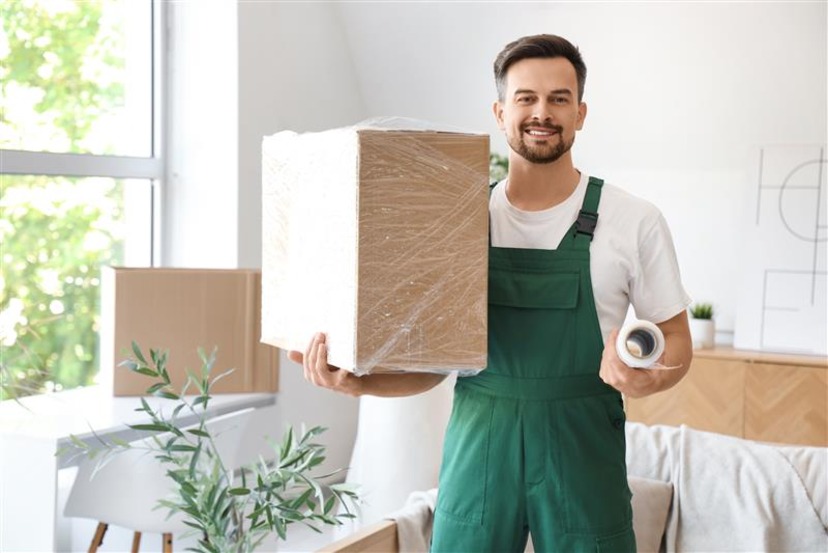
A CPO’s Guide to Smart Packaging: Choosing Tissue Tape, Stretch Film, Strapping, and 3-Ply Packing Boxes Online
For Chief Procurement Officers (CPOs), the importance of smart packaging extends far beyond merely wrapping products.
In today’s supply chain landscape, packaging plays a crucial role in ensuring cost efficiency, minimizing damages, and improving logistics.
Choosing the right packaging materials can lead to reduced operational costs, faster turnaround times, and better sustainability.
In this blog, we’ll take a closer look at essential packaging materials like Tissue Tape, Stretch Film, Strapping, and 3-Ply Packing Boxes, and how to source them effectively online to maximize procurement value.
Why Smart Packaging Matters in Procurement
Smart packaging is a strategic asset. It not only protects goods during transportation but also optimizes warehouse handling, improves customer satisfaction, and supports brand reliability.
Key benefits include:
- Reduced Damages: Proper packaging minimizes the risk of product breakage, return costs, and re-shipping expenses.
- Lower Logistics Costs: Materials like stretch film and 3-ply boxes help in better space management, reducing shipping volume and freight charges.
- Sustainability: Modern packaging supports recyclable, reusable materials and helps align with ESG goals.
- Efficiency: Easy-to-handle packaging accelerates warehouse and distribution operations.
- Compliance: Adhering to packaging standards helps in maintaining compliance with shipping and regulatory norms, especially for export shipments.
By addressing multiple touchpoints in the supply chain, smart packaging ensures goods are protected, operations are optimized, and costs are controlled.
Key Packaging Materials & Procurement Tips for CPOs
Tissue Tape: Lightweight Versatility
Tissue tape is a double-sided adhesive tape widely used for bonding, sealing, and packaging of lightweight items.
Its ease of application and strong grip make it ideal for packaging small or delicate products.
Benefits:
- Lightweight and easy to handle
- Strong adhesion for long-lasting bonding
- Suitable for a wide range of surfaces
Procurement Tips:
- Choose the appropriate thickness and adhesive strength based on application.
- Bulk buying offers cost advantages.
- Select trusted brands with positive reviews and verified quality standards.
- Ensure compatibility with automated taping machines if used in high-volume operations.
Stretch Film: Secure and Tamper-Proof Packaging
Stretch film is essential for securing products on pallets, keeping them tightly bound to avoid movement during transit.
It adds a layer of protection against dust, moisture, and tampering.
Benefits:
- Improves pallet stability
- Minimizes product shifting and breakage
- Enhances package security and reduces shrinkage
Procurement Tips:
- Select the right gauge (thickness) depending on load type.
- Consider clarity, tear resistance, and elasticity for optimal use.
- Purchase from suppliers that provide consistent roll length and film quality.
- Evaluate pre-stretched film for labor-saving in fast-paced environments.
Strapping: Heavy-Duty Support for Large Shipments
Strapping helps stabilize heavy boxes or cargo, especially for industrial shipping. It’s a critical component in keeping loads intact and safe during long hauls.
Common Types:
- PP (Polypropylene): Light-duty, cost-effective, flexible
- PET (Polyester): Durable, UV-resistant, suitable for heavy loads
- Steel: Best for extremely heavy and rigid loads
Procurement Tips:
- Match the strap width, tensile strength, and application method to your specific load requirements.
- Invest in tensioning tools or automatic strapping machines for efficiency.
- Bundle orders with packaging tools to save on procurement time and cost.
- Verify product quality through samples or trials when engaging new suppliers.
3-Ply Packing Boxes: Strong, Stackable, and Sustainable
3-ply packing boxes are commonly used for their strength and lightweight properties.
Made of three layers of corrugated fiberboard, they offer excellent cushioning and are ideal for fragile or heavy products.
Benefits:
- Shock-resistant and ideal for stacking
- Cost-effective and recyclable
- Supports branding with printing and custom design
Procurement Tips:
- Source custom sizes based on product dimensions.
- Prefer eco-friendly or recycled material options.
- Partner with verified suppliers who ensure quality and timely delivery.
- Consider moisture-resistant coatings for products shipped to high-humidity regions or during monsoon season.
Online Procurement Best Practices for Smart Packaging
Procuring packaging materials online is more efficient when done with a strategic approach.
With the rise of digital supply chains, CPOs now have access to thousands of products and suppliers at the click of a button. However, efficient online procurement requires diligence.
Best Practices Include:
- Compare Multiple Vendors: Thoroughly evaluate pricing, quality, delivery timeframes, and return policies.
- Look for Certifications: Verify that suppliers meet ISO or industry-specific quality standards.
- Bulk Discounts: Buying in larger quantities often comes with better rates and free shipping.
- Customer Reviews & Ratings: Examine past customer experiences before finalizing any procurement decisions.
- Sample Orders: Request product samples to test quality before committing to bulk orders.
- Digital Procurement Platforms: Use AI-driven procurement tools to automate order tracking, consumption analysis, and reorder planning.
- Inventory Planning: Analyze past consumption data to forecast demand and prevent overstocking or last-minute shortages.
- Integration with ERP Systems: Simplify your workflow by integrating online procurement platforms with your inventory or finance systems.
A strategic and digital-first approach ensures packaging procurement becomes a value driver rather than just a routine task.
Stretch Film and Beyond, The Smart Packaging Advantage with Moglix
Smart packaging materials like stretch film, tissue tape, strapping, and 3-ply boxes are no longer just operational choices; they are strategic enablers of cost savings and logistics excellence.
Through intelligent packaging procurement decisions, CPOs can directly enhance supply chain performance and overall business efficiency.
Moglix simplifies this process with a trusted B2B platform that offers:
- A wide range of high-quality packaging materials
- Verified suppliers with fast and reliable delivery
- Smart procurement tools that reduce manual effort
- Real-time tracking and integrated support
Don’t let packaging be an afterthought. Partner with Moglix to upgrade your packaging procurement process and stay ahead in today’s competitive market.
Start optimizing your packaging procurement with Moglix today.
Smart Packaging Choices for CPOs: How Corrugated Boxes, Adhesive Tape, and Courier Solutions Optimize Procurement Efficiency
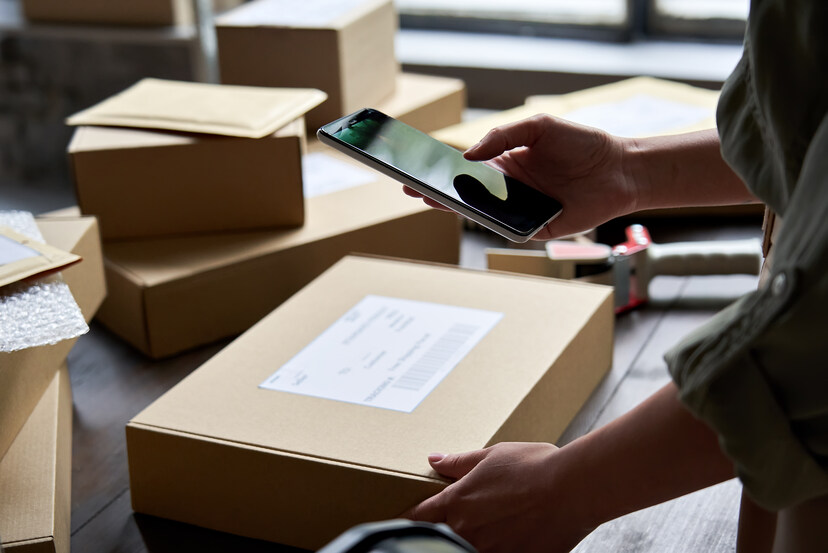
Smart Packaging Choices for CPOs: How Corrugated Boxes, Adhesive Tape, and Courier Solutions Optimize Procurement Efficiency
Smart packaging plays a critical role in improving procurement efficiency in today’s fast-moving supply chain landscape.
Chief Procurement Officers (CPOs) are under constant pressure to reduce costs, improve delivery timelines, and ensure product safety.
Smart, cost-effective packaging solutions like corrugated boxes, adhesive tape, and courier bags help meet these goals while streamlining the end-to-end procurement process.
This blog explores how making the right packaging choices can lead to smarter procurement decisions, reduced wastage, better protection of goods, and improved operational efficiency.
Smart Packaging Begins with Corrugated Boxes for Procurement Efficiency
Corrugated boxes are the foundation of effective smart packaging.
These boxes are durable, lightweight, and cost-effective, ideal for shipping a wide variety of products across distances.
For CPOs managing high-volume procurement operations, choosing the right size and grade of corrugated boxes can significantly impact packaging costs and storage efficiency.
Beyond their protective strength, corrugated boxes are also eco-friendly, recyclable, and customizable.
Companies can print barcodes, logos, and handling instructions directly on the surface, making warehouse handling and customer delivery smoother.
Choosing corrugated packaging also aligns with sustainability goals, which is increasingly important in modern procurement.
Smart Packaging Choices Include High-Quality Adhesive Tape for Procurement Efficiency
While boxes are crucial, the right adhesive tape ensures that packages stay sealed and secure during transit.
Poor-quality tape can lead to damaged goods, returns, and operational delays, directly impacting procurement efficiency.
Smart CPOs now prefer high-strength, tamper-evident tapes that resist humidity, heat, and mechanical stress.
Using branded or colored adhesive tape can also help in quick identification and reduces the risk of pilferage.
From BOPP tapes to paper-based eco-tapes, selecting the appropriate tape based on the shipping environment and product type can make a big difference in both cost and efficiency.
Courier Bags: A Smart Packaging Solution for Procurement Efficiency
For lighter items, documents, and small parcels, courier bags offer an ideal smart packaging option.
These temper-proof, waterproof, and tear-resistant bags provide security and are easy to handle.
CPOs looking to improve logistics for e-commerce, retail, or corporate mailing solutions often turn to courier bags for their versatility and space-saving design.
Reusable and recyclable options are also available in courier bags, helping companies meet their green procurement targets.
Additionally, pre-printed tracking labels and QR codes simplify delivery management and inventory traceability.
How Smart Packaging Improves Procurement Efficiency
Effective smart packaging leads to clear gains in procurement efficiency. Here’s how:
- Reduced Material Waste: Choosing the right-sized packaging and optimal materials cuts down on excess use and saves costs.
- Lower Shipping Costs: Lightweight and compact packaging minimizes dimensional weight charges.
- Improved Handling and Storage: Uniform packaging shapes streamline warehouse stacking and inventory management.
- Minimized Product Damage: Sturdy materials reduce returns and complaints, improving customer satisfaction.
- Faster Turnaround Time: Pre-assembled, easy-to-use packaging speeds up fulfillment.
All of this results in faster procurement cycles, cost savings, and improved vendor relationships.
Smart Packaging and Sustainability: A Win-Win for Procurement Efficiency
More CPOs are recognizing that smart packaging also supports sustainable procurement.
Corrugated boxes and paper tapes are biodegradable and recyclable. Courier bags made from recycled plastics contribute to circular economy goals.
By shifting to sustainable packaging solutions, companies reduce their environmental footprint while also meeting compliance with global ESG norms.
Additionally, smart packaging analytics like monitoring the reuse of materials or packaging waste generation can offer valuable insights into supply chain improvements.
Role of Technology in Smart Packaging and Procurement Efficiency
Digital innovations are enhancing how CPOs manage smart packaging.
With automated packaging systems, inventory tracking, and digital procurement tools, organizations can forecast demand better and avoid stock outs or overstocking.
For example, integrating barcode systems and RFID tags into corrugated boxes and courier bags can improve visibility in transit and minimize errors.
Procurement platforms like Moglix provide real-time data on packaging consumption, supplier performance, and lead times, enabling smarter decisions and increased procurement efficiency.
Strategic Sourcing of Smart Packaging Materials for Procurement Efficiency
Smart CPOs know that sourcing reliable packaging materials is key. A strategic procurement strategy includes:
- Evaluating vendors on product quality, delivery timelines, and sustainability credentials
- Consolidating purchases to reduce procurement costs
- Maintaining a buffer stock of high-turnover items like adhesive tapes and courier bags
Partnering with trusted suppliers ensures consistency and reduces last-minute disruptions in the supply chain.
Optimize Packaging with Moglix to Maximize Procurement Efficiency
As packaging becomes a strategic lever in the supply chain, businesses must move beyond traditional options and adopt smart packaging solutions that enhance procurement efficiency.
Corrugated boxes, adhesive tapes, and courier bags are no longer just commodities, they’re essential components of an optimized procurement system.
Moglix offers a wide range of high-quality packaging materials, backed by seamless procurement platforms and trusted supplier networks.
Whether you’re scaling up logistics or improving warehouse efficiency, Moglix helps CPOs make informed choices that deliver measurable impact.
Get in touch with Moglix to streamline your packaging procurement and build a smarter, more efficient supply chain.
CPO Alert: How Air Cushions Reduce Product Damage During Transit
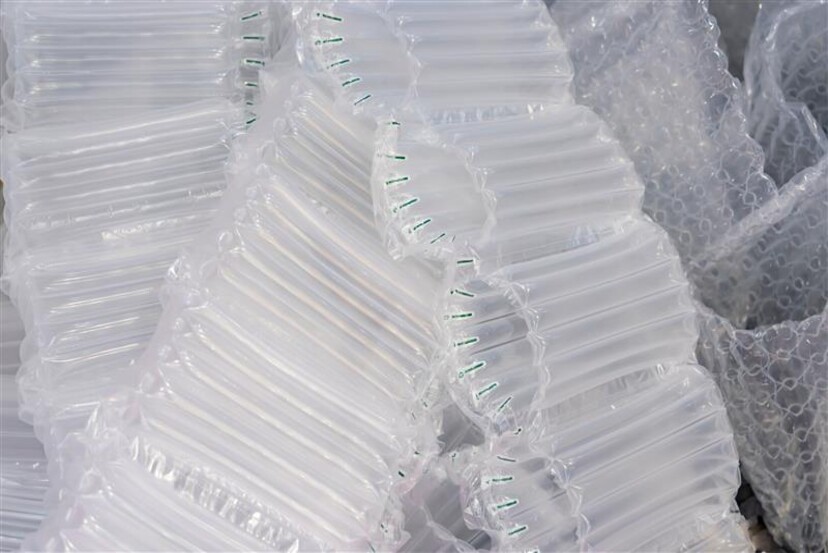
CPO Alert: How Air Cushions Reduce Product Damage During Transit
In today’s fast-paced e-commerce and logistics landscape, product safety during shipping is a top concern for businesses.
Damaged goods not only lead to financial losses but also harm customer trust and brand reputation.
As companies work to optimize their supply chains, protective packaging has become a crucial factor in reducing transit-related damages.
Traditional packaging materials such as foam peanuts, bubble wrap, and paper fillers have long safeguarded shipments.
However, these materials often fall short in providing effective cushioning, increasing costs, and contributing to environmental waste.
Enter air cushion packaging—a modern, lightweight, and sustainable solution that boosts product safety and cost efficiency.
This blog explores the role of air cushions in protective packaging, their functionality, and why they are revolutionizing transit protection worldwide.
Understanding Air Cushion Packaging
Air cushions, also known as inflatable packaging solutions, are lightweight protective materials that use encapsulated air pockets to absorb shock and prevent damage during transit.
Unlike traditional packing materials, air cushions offer customizable protection and better space efficiency, making them a preferred choice for modern logistics operations.
How Do Air Cushions Work?
Air cushions function by using air-filled pockets to distribute impact force evenly across a packaged item, reducing the risk of breakage or crushing.
The inflated structure creates a buffer zone between the product and external pressure, ensuring maximum protection during handling and transportation.
Types of Air Cushions
Depending on the type of product being shipped, different air cushion solutions can be used:
- Air Pillows
- Primarily used as void fill packaging to prevent movement inside the box.
- Ideal for securing lightweight and delicate items in transit.
- It provides flexibility as they can be arranged to fill empty spaces without adding excess weight.
- Bubble Air Cushions
- Similar to traditional bubble wrap but with larger air pockets for superior impact absorption.
- Offers a protective wrapping layer around fragile items such as ceramics, glassware, and electronics.
- Reduces reliance on bulky packaging materials while providing enhanced shock resistance.
- Inflatable Air Column Packaging
- Best suited for high-value fragile products like wine bottles, electronics, and medical equipment.
- Composed of individual air columns that wrap around an item, providing 360-degree protection.
- Maintains structure even when one column is punctured, ensuring continued protection.
How Air Cushions Reduce Product Damage
1. Superior Shock Absorption
Air cushions effectively absorb and disperse impact forces, reducing the likelihood of damage caused by drops, vibrations, or compression during transit.
Unlike foam peanuts that shift easily, air cushions maintain their structure and keep items securely positioned.
2. Customizable & Adaptive Protection
Traditional packaging materials are one-size-fits-all, often resulting in overpacking or under packing.
Air cushions can be adjusted to fit different product sizes and shapes, offering a tailored cushioning effect that minimizes excess packaging waste while ensuring adequate protection.
3. Lightweight & Cost-Effective
Compared to heavier alternatives like foam inserts and thick cardboard, air cushions add minimal weight to shipments, reducing transportation costs.
Their compact, deflated storage form also lowers warehousing and material handling expenses.
4. Sustainable & Eco-Friendly Alternative
As sustainability becomes a priority for businesses, traditional packaging materials like Styrofoam and plastic foam are being phased out.
Sustainable air cushions offer:
- 100% recyclability under certain waste management programs.
- Reduced reliance on petroleum-based materials, lowering carbon footprints.
- Less packaging waste in landfills compared to single-use plastic fillers.
5. Enhanced Customer Satisfaction
Receiving a damaged product can frustrate customers and increase return rates, leading to higher operational costs.
Air cushion packaging ensures that items arrive in pristine condition, improving customer experience and brand loyalty.
The Future of Protective Packaging with Air Cushions
The demand for inflatable packaging solutions is growing as companies recognize their cost efficiency, environmental benefits, and superior product protection.
With advancements in biodegradable air cushions and reusable packaging solutions, businesses can further reduce their environmental footprint without compromising on safety.
Industries such as e-commerce, pharmaceuticals, electronics, and automotive parts are rapidly adopting air cushion packaging to prevent damage, optimize supply chains, and align with sustainability goals.
How Moglix Helps with Packaging Solutions
At Moglix, we provide cutting-edge void fill packaging solutions, including sustainable air cushions, to help businesses protect their shipments efficiently.
Our air cushion packaging solutions offer:
- Eco-friendly materials that reduce plastic waste and comply with sustainability regulations.
- Customizable cushioning options for different industries and product types.
- Cost-effective transit protection, reducing the need for excessive packaging materials.
- Easy integration with existing logistics and packaging operations.
By partnering with Moglix, companies can achieve better product protection, lower costs, and improved sustainability, ensuring a seamless and damage-free shipping experience.
Conclusion
Air cushions in protective packaging have revolutionized transit protection by offering superior shock absorption, adaptability, and cost-efficiency.
As businesses face increasing demands for sustainable and reliable packaging solutions, air cushions provide a practical alternative to traditional materials.
By investing in inflatable packaging solutions, businesses can reduce product damage, minimize waste, and enhance customer satisfaction.
With continuous innovations in biodegradable and recyclable air cushion technology, the future of shock-absorbing packaging is set to become even more sustainable and efficient.



